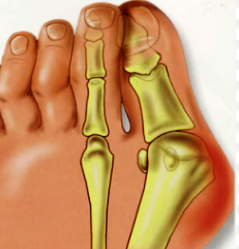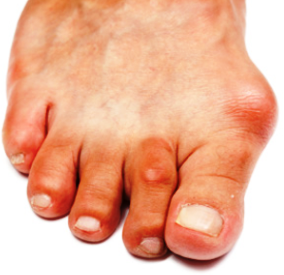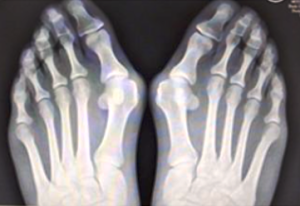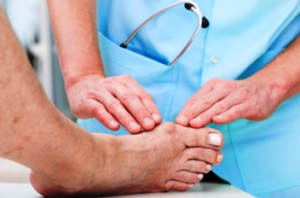Hallux Abducto Valgus
Hallux Abducto Valgus (Bunion)
A bunion is often described as a bump on the side of the big toe. But a bunion is more than that. The big toe leans toward the second toe, rather than pointing straight ahead. This throws the bones out of alignment – producing the bunion’s “bump”.
Bunions are progressive, they don’t go away, and will usually get worse over time. But not all cases are alike – some bunions progress more rapidly than others. As the bunion progresses, the big toe joint fails to function properly leading to arthritis in the joint. Osteoarthritis can develop in the big toe joint as the bunion worsens over time, causing increased pain and stiffness in the joint.
Causes
Bunions are most often caused by an inherited faulty mechanical structure of the foot. It is not the bunion itself that is inherited, but certain foot types that make a person prone to developing a bunion. Although wearing shoes that crowd the toes won’t actually cause bunions, it sometimes makes the deformity get progressively worse.
Some other common causes include;
- Footwear – high heels and tight fitting footwear.
- Poor foot mechanics.
- Trauma
Symptoms
Some common symptoms that may appear as a result of the bunion include;
- Bump of the side of the big toe joint.
- Pain and soreness.
- Inflammation and redness.
- Burning sensation and possible numbness.
- Corns or callus (hard skin) on the bottom or side of the big toe joint.
- Stiffness moving the joint.
Diagnosis
Bunions are most readily apparent – the prominence is visible at the base of the big toe or side of the foot. However, to fully evaluate the condition, the podiatrist at Sydney Foot Clinic may take x-rays to determine the degree of the deformity and assess the changes that have occurred.
A comprehensive assessment and biomechanical assessment may also be performed to identify any biomechanical factors contributing to the deformity.
Treatment
At Sydney Foot Clinic, the following treatment options are offered for bunions;
- Nonsteroidal anti-inflammatory medications (NSAIDs) and Ice – help reduce the pain and inflammation.
- Padding and strapping the foot.
- Prescription of custom made orthotics – orthotics are designed to guide the posture/mechanics of the foot and reduce pressure at the big toe joint
- Footwear recommendations – advice regarding comfortable and supportive shoes.
- Injection therapy – prolotherapy can be used to reduce symptoms.
- Activity modifications.
- Splinting the big toe joint.

Because bunions are progressive and there is no effective treatment to get rid of them, surgery is sometimes indicated.
